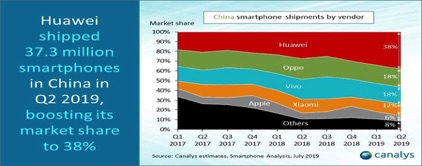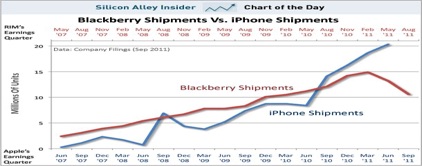2 The Partnerships
Channel Partnerships In the span of a few years in the early 80s, in spite of having a (slightly) superior product in its Apple II PC to the IBM PC, Apple lost out to IBM, at a time when the
PC Market was growing at 40% a year. It made the 3 following mistakes. Price: the first mistake
Apple made was to starve the very popular Apple II and sell instead a succession of new
products (Apple III, Lisa, Macintosh), which, tho' innovative, turned out to be so costly they
had to be priced at 5 times the acceptable market price. Product: its strength being in hardware,
it stubbornly refused to partner with Adobe in user software (today's apps) where it was weak.
This forced its channel partners to turn to IBM whose IBM PC was not only priced low but
could also run on all operating systems (OS), including Apple's. Channel: This time around, in
2004, a major distributor, Cingular (later acquired by AT&T), impressed by the success of the
iPod, came knocking to ask Apple to make what was to become the iPhone. A more mature Jobs
more carefully listened before accepting and by doing so, had clinched access, literally overnight,
to AT&T's very large subscriber base of some 100M mobile phone users
Technology Partnerships Unbelievable as this may sound, Apple, a PC maker, did not know
how to make mobilephones. This explains why, at AT&T's prodding, it accepted to team up with Motorola to make a cellphone, the Rokr pictured below, with an iPod built in. Forged too hastily,
the alliance with Motorola broke up shortly thereafter, not without Apple acquiring in the
meantime the know-how to design and manufacture a mobilephone, integrating its capabilities
into its iPhone. Porter was right: doing better is not enough, doing differently is the key to success
Industry Partnerships Technology Apple chose to defer to the best industry standards
to achieve a level playing field in both performance and cost for its products. Product
It was only by building on this very solid base, that it was able to develop its differentiation
strategy with a distinct market offering at the higher-end of the market, leveraging its
uncommon excellence in product development, Market then marketing and delivering it
to a mass market. Technology Inventions vs Product Innovation Most technologies, such as
Voice Recognition (VR) and Facial Recognition (FR), are technical inventions awaiting
decade-long industry standardization (IEEE). Integrating the technologies as a first step,
most products are business innovations, using not just 1 P (product) but all 4 Ps (product,
price, place and promotion) to innovate across the entire product-market-channel value chain
1 The Insight, The Opportunity, The Strategy:
The insight came from the first iPod, launched in 2001. It was the successful miniaturization
of the music player's two key electronic components normally found in computers, the 1.8 inch
hard drive and the logic board containing 2 chips (CPU and Audio), which convinced Apple that
it could pack not just 2 but all of of a computer's components into a palm-sized device. On this insight, Apple went on to make the iPhone, introducing it in 2007. A teardown of the first
generation iPhone will show that it contained at least 6 chips soldered on the logic board: a
wireless network, CPU, GPU, audio, touch sensor and display chip. With exceptional foresight, Apple also made sure that the iPhone's operating system would carry all communication
protocols and media formats, which were in the process of becoming fully digitized. The iPhone
had to have 2 unique product features: i) it would have a touch screen, ii) it would be a 2-in-1 app-based hand-held device, enabling it to sell on 2 distinct channels, the carrier subscription
data plans and the user applications on its own online store, the App store, serving the same
market, the user market (see "product/market/channel fit" below)
The Reality Check To turn that insight into a viable business opportunity, Apple had to
develop its marketing strategy around the 4 Ps and its competitive strategy around the 5-Forces:
4 The Management Team
The CEO Steve Jobs became a much more mature and well-rounded businessman by the time he
returned to Apple in 1997, considerably expanding his skills in product development to marketing
and distribution, honed at Pixar, his previous firm (it didn't hurt either to have a wife who had a
perfect business pedigree). A proof of this change was the decision he took to open up the Mac PCs
and later on iTunes to Windows and Intel chips to potentially reach out to the hundreds of millions
of non-customers he stubbornly shunned 12 years before during his first stint at Apple. He
also became a much better manager of people, surrounding himself with a very diverse group of
young and talented functional executives, without whom Apple's complete transformation from
PC maker to the digital company it is today may perhaps never have materialized.
The Management Team Steve Jobs built up a formidable management team, not only on the
technical side but also on the business side, in 6 key areas. The sales function was substantially
strengthened under Jobs's de facto COO, Tim Cook, who oversaw education sales, channel sales,
iPhone sales, and the online stores, all of which represented one and the same market offering.
The operations and fulfillment function was headed by a young Jeff Williams. The marketing
function was under the responsability of Phil Schiller. The Internet services business (the iTunes
and App store) was put under Eddy Cue. The Apple Store was run by Ron Johnson. The finance
function was managed by Peter Oppenheimer. Jobs and Cook applied the Jack Welch rule
whereby you must not only ensure stability and continuity within your top management
ranks but also personally look after the 500 key people who help you run the company
The All Important Sales Function Price Positioning In 2014, Apple introduced a new
iPhone model equipped with a 2B transistor-strong chip, the A8, pricing it at $600 on average,
3 times more than the level of the last 6 years but in line with what its closest competitors
charged and with what its targeted customers were willing to pay for. Because of the risk of
customer rejection of the new iPhone's price hike, it developed a new 3-pronged strategy.
Product in order to maintain its lead over its competitors, it would increase the transistor count
of its chips by a billion transistors every year (the latest A15 Bionic chip on its iPhone 14 has
15B transistors). Place In order to increase unit sales, it would execute a much more agressive
"sales push" strategy in its then 400 Apple stores, with the objective of generating more
purchases from its 350 million annual store visitors. Today, in 2023, Apple has 500 million
visitors visiting annually its 500 Apple stores. Price Points To not lose real demand at the lower
price points, Apple continues to sell older iPhones, going as far back as the 2014 iPhone 6
model, and for as long as they'd still meet its very high network (at least 4G), Ai (at least Touch
ID), and chip (at least A8) performance standards while still generating sufficient sales volume
to realize scale on the older models and scope in combination with the newer models
The Sales Objective Apple is confident it will reach its objective to increase overall revenue by
2022. End 2020, it introduced an entirely revamped line of its devices, enhanced by the latest
AR/VR and 5G technologies (the iPhone 12, iPad Air, Apple Watch 6, Mac M1). In Services,
Apple is positioning itself for the revolution that is taking place in the trillion dollar Media & Entertainment (M&E) industry. Leveraging their unique competitive advantage in video
streaming technology, new entrants now hold 25% of the TV market. In this context, Apple
has succeeded in growing its subscriber base in streaming to 935M, even if 825M of them buy
3rd-party subscriptions rather than its own on its App Store. Another new source of revenue,
at $3.5 B of sales, is its Apple Ad business, where it places ads in its App Store and in January 2023,
in its till now untapped Apple Maps. Its Google Search Referral business brings in another $19B a
year of revenue. Apple's 2022 revenue from services doubled to $74B at a 71% Gross Margin vs 2018
3 The Financing
Thanks to the success of the iPod, the iTunes store and its Macs, Apple had the cash cow it needed
to finance between 2004 and 2007 the development of the iPhone, which by 2011, 4 years after
its introduction, accounted for half of Apple's revenue
IPhone NET SALES:
2007: $123M (1 quarter)
2008: $1.8B (first full year)
2009: $13.1B
2010: $25.2B
2011: 45.9B
2012: $78.7B
2013: $91.3B
2014: $101.9B
2015: $155.0B
2016: $136.7B
2017: $141.3B
2018: $166.8B
2019: $142.4B
2020: $137.8B
2021: $191.9B
2022: $205.5B
2023: $200.6B
2024: $201.2B
Has the iPhone matured,
with sales to stagnate at $200B a year?
China XMas Quarterly Sales
(Huawei Comeback):
Q4 2021: $25.8B
Q4 2022: $23.9B
Q4 2023: $20.8B
Q4 2024: $18.5B
How can Apple catch
up and sustainably
bypass huawei, as it did
with its iPhone ai-based
"Deep Fusion" cameras
in 2021?
Our Strategic Review of Apple, using the 4 Ps and the 5 Forces, addresses the fundamentals in 16 questions:
Applying The Fundamentals:
. Do you have the right idea the insight, the business opportunity and the strategy development process (1)
. Do you have the right resources: the partnerships, the financing, and the management team (2-4)
Developing and Managing Your Strengths
. Do you have the right strategy: the strategy (5-8), the excellence 5 Forces (9-12), the business model (or differentiation) 4 Ps (13-16)
. Do you have the right controls: see our Strategy and Execution pages for approach
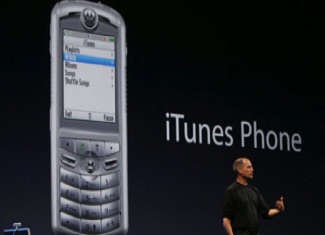
Success: Do differently
(the 1st iPhone, released in 2007)
The touchscreen was an essential design feature which Steve Jobs believed would further strengthen Apple's competitive advantage over Blackberry. It was intially meant to equip a tablet, what was to become the iPad, which Jobs was also developing. Watch above Jobs' keynote introducingg the iPhone in 2007
Failure: Do better
(the Motorola Rokr, released in 2005)
The iTunes app and the iPod hardware were a bit too hastily added to a Motorola mobilephone
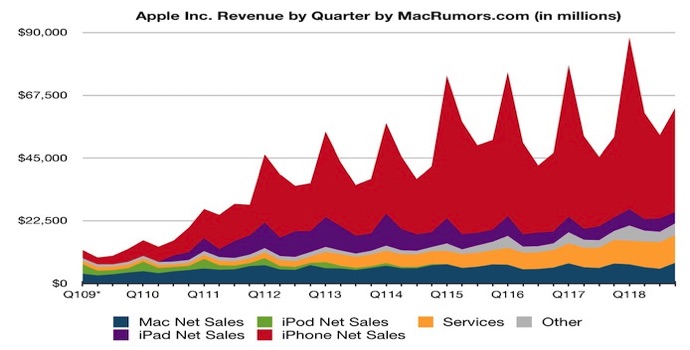

Marketing
& Digital
(Market)
Innovation
& Design
(Product)
Sales
& Operations
(Channel)
Strategy
& Structure
(Roadmap & Rollout)
CEO Tim Cook
AI Data
Business
Finance
Strategy: Marketing Tech, AI, Data Analytics/Business Intelligence, Digital Costing, Privacy & Security
Operations: Workflow (activity), RPA (transaction), Collaboration (teams), Universal Ledger (accounting)
Administration: eSignature/OCR, Document Classification Automation (ML), Speech to Text, ERP)
Legal (direct tax & audit, smart contracts), Treasury (CBDC, Fintech), Gen AI (ChatGPT)
Tim Cook
Alan Dye
Design Strategy
Katherine Adams
Legal & IP
Lisa Jackson
ESG
Kristin Huguet Quayle
Public Relations
David Smoley
Data Analytics
John Ternus
Hardware
Engineering
Johny Srouji
Hardware
Technologies
AI Cloud
Hardware Platform
AI Apps
Data Analytics,
Marketing tech
AI Apps
Network
Apps & Services
AI Apps
Smartphone
iOS
iPhone, Tablets,
Apple Watch

2. Competitive Strategy (Porter's 5 Forces)
3. Business Model
4. Marketing Strategy
(Kotler's 4 Ps)
5. Customer Experience
Mary Demby, CIO
IT strategy,
AI Data Centers
U. Thyagarajan
Internet strategy


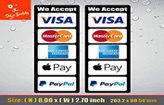
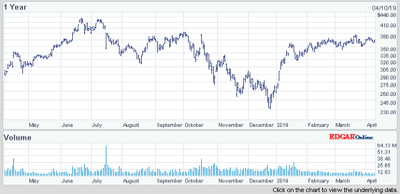
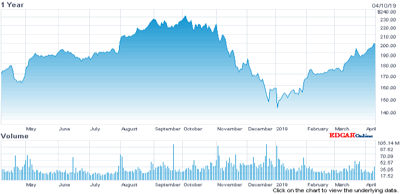
Netflix
Apple
Apple TV App
Digital TV
Apple Podcasts, Apple Books
Licensing
(i.e. Google)
Siri & AI
in-device
Maps
in-device
Apple Care
in-device
App Store, Apple Search Ads
Apple TV 4K,
Siri Remote
Homepod, Homepod Mini,
Smart HomeKit
Beats Wireless Headphones (1)
Airpods Pro 3
9/2022
Apple Watch Series 8
9/2022
Macbook Air with M2 chip 6/2022
iPad 2021
iPhone 14
9/2022
Products
Services
developer.apple
mfi.apple (IoT)
Wearables, Home & Accessories
Apple's 4 Ps Strategy in Fintech
Apple's Cross-Selling Strategy: Indirect Channel Partners
Apple Direct
Retail
Channels
Apple Direct
Sales Force
Apple Indirect
Wholesalers
Apple Indirect
Retailers

Apple Indirect
Enterprise Partnerships
Markets
Consumer,
Business
(Industrial, Commercial)
Government,
Community,
Non-Profit
Developer
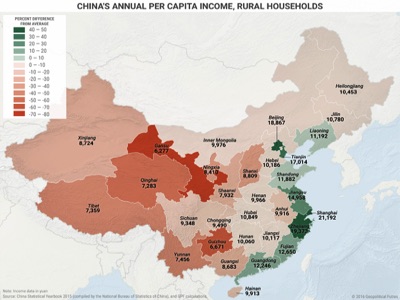
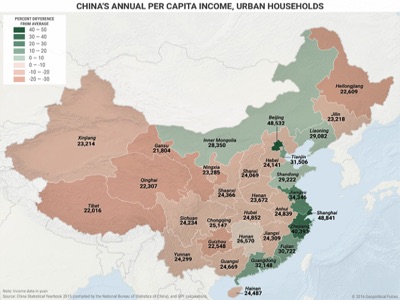
CHINA'S URBAN MARKET
CHINA'S RURAL MARKET
Apple 4 Ps Strategy in China: Place
(Oppo's strategy focused first on the rural market, overlooked by the market leaders)


Huawei P20
40 MP main sensor,
no AI neural engine
no quad-sensor
Oppo R17
20 MP main sensor
no AI neural engine
no quad-sensor

Xiaomi Mi CC9
27 MP main sensor
no AI neural engine
no quad-sensor
Apple knew that the AI camera chips it was developing in-house would blow its Chinese Clone competitors out of the water. In 2019 and 2020, as the Chinese were showcasing models with a higher pixel count generated by non-AI chips, Apple quietly developed an entirely new camera system run by :
i) Software: an AI neural engine called Deep Fusion, which allows the camera to take multiple shots then select the one with the perfect focus, all in a couple of milliseconds
ii) Hardware: a new sensor, called the quad-sensor which was designed to pack in more pixels on the sensor (one of its iPhone 14 Pro cameras has 48 megapixels).
Sales of the iPhone 12, equipped with this new camera system, increased by 70% in 2021 versus previous year models
How Apple Won The Camera War in 2021
In 2019, Huawei's iPhone clones had 38% of the Chinese smartphone market to Apple's 6%.
In 2021, Apple reversed course to avoid Blackberry's fate (see point 13 for more)
2007-2013 Apple elbows out Blackberry
2017-2019 Apple is overtaken by Huawei
(1) Apple's New Accessories Strategy: Downstream, Apple's ACCESSORIES (Beats headphones, Airpods, the $5000 Pro Display, $1000 Pro Stand, the iPad Pro's $300 Magic Keyboard and $129 Pencil, the $30-$150 MagSafe USB-C chargers, the Airplay, the Homepod and HomeKit, the $500 Hermés Watch wristband,..) have become a standalone high growth and highly profitable multi-billion dollar business SBU. Apple also takes a cut on all 3rd-party accessories. Upstream, it also has 2 SERVICE REPAIR programs to sell its parts (independent and self-service)
Health & Fitness
Platform
Healthcare
Platform?

Apple Watch
(Apple Glasses?)
Apple's Cross-Selling Strategy: Apple Watch & Verticals
Airplay
Co-Branding
(Hermes, Nike, Edition)
Other
Luxury Markets?
Current Offering
Strategic Initiatives
Media Bundle
(September 2020)
Fintech Bundle
(contactless,
credit card loans,
buy-now-pay-later, trade-in)
Trade-in
Instalment
Promotional Pricing
Tor Myhren
Martech strategy
AI Marketing
Business Fundamentals
Kevan Parekh
Manager's Digital Toolkit
Craig Federighi
Operating System
Software Platform
Device VPs
Product SBUs
Eddy Cue
Service SBUs
Phil Schiller
including
AI App Store
Apple Ad strategy
Product Profitability
Face ID 30000 dot face map
TrueDepth Camera System
LIDAR Scanner for AR apps
AI Design
AI Visual Recognition
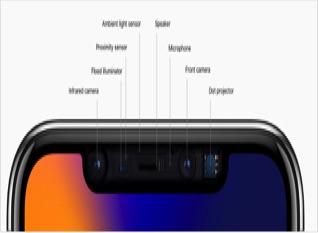

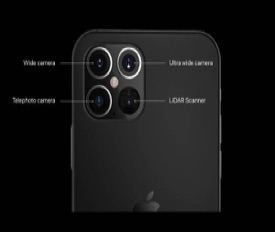
All Apple Silicon chips are now powered by AI neural engines on all of Apple's devices
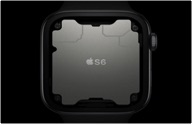
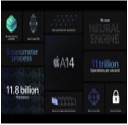
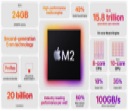

Apple Watch S6 chip
mnano CPU
neural engine
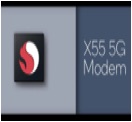
5G chips from Qualcomm
True Depth camera system
Face ID sofware
LiDAR Scanner with Augmented Reality (AR)
iPhone 13
CPU
neural engine
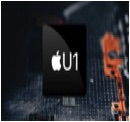
Security chip
U1 Chip (right) the chip uses Ultra-wideband (UWB) technology which allows for close range (1cm) localization and high penetration radar, at low-power. Medical monitoring is a future application (UWB can read through the human body). 5G Chip (left) Apple acquired Intel's 5G Modem Chip business (to replace Qualcomm's or to develop 6G?)
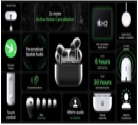
Online Stores: Apple.com
App Store
Apple One
and dedicated sites (search ads,...)

Security & Privacy
(right) the security hardware (T2 Chip) and the Privacy software protect users from device and app tracking (Safari, Maps, App Store,....)
Touch Screen & Printed Electronics
There are 3 thin films sprinkled by evaporation with conductive materials (metal): the Touch panel , OLED display and Sensor chip that connects to the Operating System. They are glued or "laminated" with an adhesive called OCA. On top is the Gorilla Glass
Apple: prior to its 4-for-1 stock split on August 28, 2020
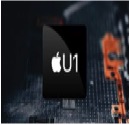
IoT U1
Security
neural engine

BNPL
Apple Card

Apple Cash
Apple Pay
2 years after acquiring Mobeewave, at its June 2002 WWDC event, Apple launches its Apple Pay Later offering. Its Fintech makeover is now complete:
. Credit (Apple Card and apple Pay Later
. Money Transfer (Apple Cash)
. Mobile Payment (Apple Pay)
AI Transformation
ONE
NETWORK
Marketing Strategy
Greg Joswiak
Marketing EVP
Susan Prescott
Business Market
Deirdre O'Brien
Retail Market
Eddie Cue
Services Market
Craig Federighi
AI Developer Market
Customer Profitability
Apple's 4 Ps Strategy In Internet TV
Touch panel
OLED Display
Touch Panel Sensor Chip
Sabih Kahn
Supply Chain
(175 suppliers, 25 SKUs, Distr. & Data Centers)
Manufacturing
(Strategic parts manufactured in
TW, JP, SK, US, GER
& FPs assembled in
CN, IN, VN)
AI Chip Strategy
(Advanced Manufacturing Fund, US Reshoring)
Mike Fenger
Channel SBUs
Country SBUs
Sales
Strategy
Business Strategy
Tim Cook &
Adrian Perica
Competitive Strategy,
M&A (4 Ps, 5 Forces)
Corporate Strategy
(downsizing, AI M&A)
Isabel Ge Mahe
Business Profitability
John Giannandrea
AI EVP
AI System
(foundational models)
Craig Federighi
AI Product
(Apple Intelligence)
Mike Rockwell
AI User
(Siri, Vision Pro,...)
Kim Vorrath
AI Execution
(Project Management)
AI Strategy
Business Responsability
Sabih Khan
Worldwide Operations & Customer Service
Channel Profitability
Customer Satisfaction
replacing end-of-life
CableTV
Broadcast TV
MOBILE
Apple
Apple
Protective "Gorilla" glass
All other layers are electro-magnetic films
THE
INTERNET
iPhone 12
20 MP main sensor
AI neural engine
quad-sensor
Market
Customers
(Millennials
& Gen Z's)
Non-Customers
in the Total Addressable Market (TAM)
Product
Content
(film, games, NFTs, shorts,...)
Related Merchandising
(the Disney model)
Place
Platform
(Streaming, Metaverse....)
App-based
Price
Subscription
Ad-sharing
Promotion
Plan
Bundles
(content bundles, MSO bundles)
Data Analytics
(recommendations,
ChatGPT?)
4 Ps
(demographics)
5 Forces
(differentiation)
Customer Engagement
Customer Delivery
SBU Strategic Business Unit
Services
Platform
Tim Cook
Apple Offering
Mobile
ONE
DEVICE
ONE
CHANNEL
STreaming
ONE
CONTENT
Producer
Distributor
Telcos
TV & Cable TV
Yesterday
(Many Channels, Many Networks
Today
(One digital Channel and
multiple marketing channels
within One digital Network)
TV
Video
Wired
Phone
Inter-
net
The Multi-Billion User Base With more than a billion iPhone users who must go on the App Store to buy 3rd-party apps, Apple didn't have to build up from scratch a base of new customers in the streaming market. Apple was part of the multi-billion user club, the MSOs (telcos, TV networks) and the FAANGs (Facebook, Amazon,.) through whom upstarts like Netflix and Spotify had to go to sell their streaming services. It's only when these upstarts reach a critical mass audience of about 200M subscribers that they can
afford to reverse the bargaining power in their favor. As the tables turned, Apple did cut its commision rate by half to 15% on these
big ticket items, knowing that any loss of revenue from the rate cut would be more than offset by a jump in revenue brought about by
the boom in the gaming and streaming markets. But it knows that the dam having been breached, the App Store must be revamped
or replaced altogher
Threat As Opportunity To preempt the dwindling role of the App Store, Apple came up with an offensive strategy and a defensive
sttrategy. Offensive Strategy in Streaming It had to accelerate the build-up of its streaming business along 3 objectives: i) the me-too streaming products had to reflect Apple's high-end positioning (Apple TV+), ii) subscriptions had to be quite cheap ($6.99 a month for Apple TV+), iii) viewership must reach at least 200M (Netflix has 230M). This is why Tim Cook was willing to pay top dollar to buy himself into Sports Streaming, acquiring the rights to air Major League Baseball and Major League Soccer on Apple TV+. Other deals are in the works. Defensive Strategy for the App Store Apple dragged out of his retirement Phil Schiller to help it reverse the erosion in revenue on the App Store. Schiller has done just that. He has cut on a case by case basis the commission rate from 30% to 15% on the most exposed apps (Epic's) and aggressively developed Apple's Apple Ad business on the App Store, with a further extension to Apple Maps. The Untapped Market Strategy Apple's streaming strategy is a typical case of cleverly moving into an untapped yet very sizable market which incumbents, out of hubris, tend to almost always overlook. That market is the Sports Streaming market as opposed to the overly crowded Entertaiment Streaming market (just as Netflix saw the potential of the Entertainment Streaming market everyone else didn't see or didn't want to see)
Cable
TV
Wire-
less
Internet
analog network blue
digital network
(Internet) black
Strea-ming
Video
Voice,
Text
Voice,
Text
Pics,
Text
The Internet network has replaced what were previously 5 distinct physical networks, generating substantial savings in both capital and operating costs
But these savings were not passed on to the end-user. Instead they were diverted to pay down the substantial debt the MSO's accumulated to vertically integrate their content distribution and production operations. They achieved as a result enormous pricing power, which allowed them to charge higher subscription and advertising fees on their users and advertisers
Market Demographics
But due to the demographic shift to Millennials and Gen Zs, their viewers have begun over the last couple of years, to switch to streaming
The Entertainment Streaming Market
Netflix has a head start, having begun to vertically integrate its streaming operations by moving into movie production in 2013
As for the MSO's, after spending the last 20 years paying down their substantial debt, they must now downsize, as we saw recently with Disney, Netflix's most formidable competitor
The Sports Streaming Market
Apple recently paid top dollar to win the rights to air Major League Baseball on Apple TV+. More deals are in the works
Barrier To Entry
The barrier to enter the TV market has radically shifted from ownership of the proprietary physical network to ownership of content. Content is king
content red
Comptetitive Strategy
Using Porter's 5-Forces model, 2 metrics which can greatly help a firm choose the right generic competitive strategy (quality, cost or niche) are Market Share Growth and Profit Contribution (Market share * % Product Margin):
Market Share Growth (metric 2)
A firm either gains, maintains, or loses market share:
A firm gains market share when its growth rate is greater than that of the market. This reflects superior performance. This was the case of the iPhone at first between Jan 2007 and Dec 2010, when it attracted most of the new customers entering the market and then between Jan 2011 and Sep 2013, when it also drained most of the market's existing customers, mainly Blackberry's customers who switched over in droves to what they perceived as a far superior product that was the iPhone
A firm maintains market share when its growth rate is the same as that of the market. This reflects average performance. This was the case of Blackberry between Jan 2007 and Dec 2010, when it still had to itself most of the smartphone market, which it created with the launch of its Pearl 8100 back in 2001. It was never really challenged for 6 years until Apple came on board in June 2007 with the iPhone. Blackberry's mistake was to look at the iPhone's relative market share, which being more recent, was bound to be much smaller than Blackberry's. What it should have looked at was the iPhone's relative market share growth, which increased exponentially over time. The key metric is the market for new customers or first-time buyers, where Apple had the biggest market share
A firm loses market share when its growth rate is lower than that of the market. This reflects poor performance. This was the case of Blackberry between Jan 2011 and Sep 2013, when its customers switched over in droves to the iPhone. The 2010 iPhone 4 was now equipped with the latest technologies which Blackberry could have easily integrated into its own products (Siri, Touch ID, Retina Display, billion transistor CPU chip,...) but stubbornly refused to.
To paraphrase Peter Drucker on innovation, Apple worked on tomorrow's products, Blackberry worked on yesterday's products
Profit Contribution (metricc 3)
Using Peter Drucker's Business Diagnosis (BA) tool, a forerunner of Activity-Based Costing, profit contribution assumes that to be successful, a product
must achieve both high market share and high operating margin. To avoid margin distortions, costs must be regrouped by activities as measured by time
spent. It is activities, not sales volume, which "drive" costs (it would take the same 5 minutes to fill a $5M sales order as it would to fill a $500 order):
A high profit contribution reflects quantitatively both high market share and high product margin ("scale and scope"), and qualitatively high market adoption
and customer trust (understanding the demographics is key). Only thru innovation can you achieve both goals. Apple has done it with its iPhone
An average profit contribution reflects a lack of innovation on the part of the market leader. Blackberry, we saw, was in this position between 2007 and 2010
A low profit contribution reflects low market share and and low % margin. This was the case of Blackberry between 2011 and 2013, before its bankruptcy
Marketing Strategy
The strategy entailed i) finding the right product/market/channel fit to best serve the largest possible number of customers, ii) building a customer-focused organization, iii) securing the financing to provide the staying power to execute the action plan. Apple was lucky not only to have in its highly profitable iTunes and iPod products the cash cow for the financing but also to have in both products' large customer base a readily receptive market for the iPhone. In AT&T, the largest wireless distributor in the US at the time, it found the ideal channel partner. (I emphasize below each of the 3 tools' metrics, 4 Ps, 5-Forces, BA)
Product Life Cycle (metric 1)
Using the 4 Ps as remodeled by Kotler, a very helpful metric for developing a firm's marketing and action plans is the Product Life Cycle (PLC):
Growth Stage This is the early, introductory stage when the market gains traction, as customers become aware and begin to adop the product. The iPhone
entered the smartphome market with its iPhone at that high growth stage at the right time, in 6/2007, when there was a shift to a younger demographic
group of new customers. At the same time, existing customers, who had been using Blackberry at work over the previous 6 years, immediately saw the
superiority of the iPhone. But only until 4G came into full bloom beginning 2011, did customers make the switch, a massive one, to the iPhone
Maturity Stage At this stage, existing customers making up the bulk of the market, await a superior, more innovative replacement product to what they've been
served. This was the case of Blackberry between June 2007 and Dec 2010, when it stubbornly refused to take on the iPhone with a better product. We
clearly see that at maturity, there must be continuous product replacement by the market leader. Apple understood this, Blackberry didn't
Decline Stage At this stage, between Jan 2011 and Sep 2013, both new customers, which now made up most of the market and existing customers,
formerly Blackberry's, had switched to the iPhone. As we see here, in the real world, all 3 stages of the PLC tend to overlap
Apple Vision Pro
6/2023

Apple Vision Pro
R1 chip
Haptic
neural engine
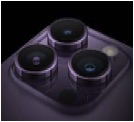
iPhone 14 Pro
Vision
neural engine
1. Strategy
Corporate Services Luca Maestri
IST, Internet Security, Real Estate & Development, Caffe Macs, Claris, ChatGPT
Deirdre O'brien
Product
Strategy
Operations
Business Organization
China
Strategy
5 The Product
Strengths Apple has always stuck to what it does best. It has always been first and foremost a
device maker. Its strength has always been in its unique ability to combine technical prowess and beautiful design, the iPod, developed in barely 9 months, being a prime example. Even the launch
in 2001 of both an online channel, the iTunes Store (9 months before the iPod was launched) and
a retail channel, the Apple Stores, were primarily aimed at selling more of its Mac PCs. With the back to back launch in 2007 and 2008 of the iPhone and the App Store, Apple still maintained a
first-mover advantage, simply because it was the only one among its peers to offer what its
customers wanted, that is not only a mobile device to play their music and run their apps on but
also a channel to download them. Exceeding Expectations Like its peers, Apple always knew what customers wanted. Unlike them, thanks to its unique strength in product development (of
both products and services), it was always able to come up with products which exceeded their customers' expectations. To this end, witness also the speed with which it has brilliantly integrated
the latest technologies into its products (AI, M chips, AR/VR,...), ahead of its competitors
iPhone At the outset, Apple knew that it could make a high-end multi-purpose smartphone which would combine a music streaming player with the iPod, a miniaturized PC with a Wifi or 4G connection and Unix operating system, and a wireless mobile phone. To command premium pricing, it would add value that would be perceived as substantial by the customer by upgrading the iPhone with the latest technologies. The upgrades would be introduced at breakneck speed, every year. Its iOS 16 iOS is in its 16th version and its 2022 iPhone 14 model runs on an 15B transistor chip that has 15 times the transistor count of the A7 chip launched in 2013
Macs and iPads After seeing annual sales stagnate at $25B 5 years running until 2019, Mac sales
finally took off, reaching $40B of sales in 2022. This was due in large part to the new Mx series
chips the Macs were equipped with. Likewise for iPads, with revenue reaching $30B in 2022
Wearables, Home, Accessories The explosive growth of a revamped Apple Watch and Airpods in 2019 will persist until 2022. The Apple Watch is expected to increase from 75 million units sold today to 115 million by 2022. The Airpods are forecasted to increase from 33 million units sold to 158 million. In FY 2022, the caterogy's sales more than doubled to $41B from $17B in 2018
Services
Internet of Things In April 2021, Apple launched its FMCA (Find My Certification Assistant)
app, to open up its Find My network technology to 3rd-Party companies. The app allows them
to create accessories that communicate with Apple devices, using its MFi technology
9 The Core Excellence
Apple's core excellence is its developer platform. It is in fact three platforms in one: the software
engineering platform, the hardware engineering platform, and integrating both together, the
user interface platform
The Software Engineering Platform
At the time of its inception, to attract the most talented developers, Apple's developer platform
had to fulfill 3 requirements, namely:
The Requirements:
1st Requirement It had to be easy to use. Just as it chose Unix for its simplicity to develop its
computers' operating system, the MacOS, Apple did likewise for its developer platform. It relies
on merely 2 programming languages and 2 repositories of tools, also known as "frameworks", to
help developers develop their customers' end-user applications. The 2 languages are Objective-C
and its more simplified version Swift. The 2 frameworks are Cocoa originally conceived for its
PCs and Cocoa Touch for its mobile devices, beginning with the iPhone
2nd Requirement It had to be "cross-platform" so that developers adept at other programming
languages, whether it is Java, Python, Ruby, etc,..., could also use it. Apple's platform is connected
to all of the frameworks which are most commonly used by developers
3rd Requirement It had to provide an outlet for developers to sell their apps. The creation of
the App Store in 2008 is such an outlet. Since its founding, it has generated $100B of gross
revenue, with $70B pocketed by the developers and $30B pocketed by Apple
The Software Tools
Coding Tools Its Swift web application framework is connected to 12 other frameworks
and its Objective-C framework is connected to 7 other frameworks
Testing Tools Its framework to test software, TeamCity, is connected to 10 other frameworks. Its
software version control and release framework, Xcode, is connected to 8 other frameworks. Its
software performance control framework, Pingdom, is connected to 40 other frameworks
Application Development Tools It is through the Sentry error detection framework that
Apple's developer platform is connected to the much broader developer network. The following
is a sample of some 70 frameworks it is connected to: languages (Java/Javascript, Python, PhP,
Ruby on Rails), operating systems (Matcha, LambdaNative), interactive applications (node.js,
angularJS), AI applications (Nanonets, Swift AI), cloud applications (Apache OpenWhisk),
web applications (Vapor, AnyChart), user interface applications (Material, Render),
AR/VR/3D applications (Amazon Sumerian)
The Hardware Engineering Platform (2007 vs 2022)
Apple rightly chose to focus on only a few technologies, in fact 3, that would allow it to maintain its
wide lead over its rivals. These 3 technologies are i) optical technologies behind its AI facial recognition
TrueDepth camera, ii) SoC chipset technologies with a chipcount on the iPhone that increased from 1B in
2013 to 15B transistors in 2023 on the iPhone 14 chipset, iii) network technologies in 5G, even 6G
Optical Technologies The first iPhone, launched in 2007 had a single-lens 2 megapixel (MP) camera. The
2022 model, the iPhone 14 Pro, has 1 48 MP camera at f/1.78 aperture, 1 ultra wide 12 MP camera at
f/2.2 aperture, 1 12 MP telephoto lens at f/1.78 aperture, 1 12 MP telephoto lens at f/2.8, all running on
a neural engine chip capable of making 5000 adjustments per second and of capturing low light vision.
As shown below, the telephoto camera, used for portraits, equipped with Apple's proprietary TrueDepth
camera system and Face ID AI facial recognition software, is able to capture 30 000 invisible dots to create
a depth map of your face. The LiDAR Scanner on the 2022 iPhone 14 Pro and iPad Pro run the latest
Augmented Reality (AR) applications used to map "room-scale" objects as far as 5 meters away
Processing Chip The CPU chip which equipped the first iPhone in 2007 had a clockspeed of 0.412 Ghz, was a
32-bit processor and 90 nm in size. End 2022, the A16 Bionic chip on its iPhone 14 Pro has a clockspeed of
3.46 GhZ on its performance cores and 2.02GhZ on its energy-efficient cores, is a 64-bit processor, is 5nm
in size and has an AI neural engine. Other than the increase in the number of transistors (from 1B on the
A4 to 16B on the A16 and of transistor nodes ("gates") using extreme ultra violet (EUV) lithophotography nanotechnology machines to engrave them on a silicon die of 88 square millimeters, the main innovation
of the last 3 years has been in the use i) of programmable chips (FGPA and ASIC), ii) of machine learning accelerator chips (Apple's "AMX blocks") added onto the CPU and GPU chips, iii) of an AI neural engine
to properly allocate workloads to the best suited chip to achieve speed and lowest power consumption
Network Technologies As part of its strategy to design in-house key critical technologies, Apple acquired Dialog's power management chip business end 2018. Regarding the highly strategic 5G wireless modem, Apple first bought out, in 7/2019, Intel's 5G modem business, taking ownership of key patents and bringing in 2200 engineers. Then, in 12/2019, it struck a 6-year agreement with Qualcomm to co-develop a 5G modem, combining Intel's and Qualcomm's Snapdragon technologies. Beg 2021, Apple began recruitment of telecom engineers to develop 6G
The User Interface Platform (2007 vs 2022)
With the iPhone's two signature user interfaces, the touch screen and its natural language (NLP) voice assistant Siri, Apple has shown its unrivaled mastery of the entire technology innovation process, in product development and in business development. With the touch screen, which was invented in the late 60s, its innovation insight was i) to develop the product, the iPhone and its iOS operating software to accomodate the touch screen instead of the other way around, then ii) to develop the product's business, by finding the leading channel partner, AT&T, to distribute it at scale. It recently did the same with 2 other technology inventions from the 70s, natural language voice recognition with Siri and facial recognition with TrueDepth
7 The Strategy
Firmly positioned at the higher-end, Apple's business strategy is to be the market leader, rather
than the market follower, across all stages of the value chain:
Channel Leadership Build up an integrated distribution channel which could seamlessly
cross-sell between its online and offline stores. The first Apple store was opened in 2001, the
iTunes store also in 2001 and the online App store in 2008. The computer programs of both
online websites, or platforms as they are now called, were written in off the shelf Open Source
application and web programming languages
Product and Brand Leadership Equip all products with a Unix-based operating system and a Risc-based CPU chip. Both the OS's and the chip's software were also coded in Open source languages. All of Apple's products were to be designed for ease-of-use, exceptional aesthetics and
to contain the latest breakthrough technologies (i.e. its AI apps in facial recognition Face ID
and in speech recognition Siri, and in 2020, the latest AR/VR and 5G technologies)
Market Leadership Position the iPhone at the higher-end but price it at the lower-end to
penetrate the market. It took Apple 6 years to acquire a large enough base of new customers, to
whom it would sell cumulatively some 300 million iPhone handsets between 2007 and 2013. It
took another 6 years for Apple to turn its new customers into loyal customers, creating its own replacement market
Industry Leadership Design in-house the products to guarantee the highest quality its
demanding customers expect but subcontract production to keep costs low. Innovate at
breakneck speed to reduce the product lifecycle to a year. Apple has deliberately chosen to
design itself its products and chips, which are nonetheless based on standards
followed by the industry as a whole. It achieves scale i) upstream from the massive volume
of the lower-value parts and components produced by the industry as a whole which go into
the final product, ii) downstream from the higher-value production of the final product
itself, i.e. high performance chips by TSMC, FP assembly by Foxconn, AI integration at home
Digital Leadership Apple's Cloud platforms are designed to give visitors a unique interactive
digital experience. They are what is now commonly known as digital experience platforms or DXP
8 The Ideal Product
Apple succeeded in designing what marketers call the "ideal product" which neither its
customers nor its competitors thought possible to make, that is 16 years ago. Here too, as the
attached article will show, it took them 4 painstaking years before they came up with the final
design of the iPhone in 2007. For the first time, Apple is trailing behind a formidable
competitor. That competitor is Huawei.
6 The Positioning
Apple's recent problems in China, which it has corrected, go to show that positioning one's
offering in the marketplace involves both a product as well as a price positioning, relative to
both its customers and its competitors:
Product Positioning Playing on its unique strength as a developer of high quality products, Apple
deliberately chose to position itself at the higher-end of the market. It took Apple no less than
4 painstaking years to develop the iPhone and another 5 years to push Blackberry out of the
market. As Alfred Sloan would have said, the strategy was to sell to those Blackberry customers
in the lower-end segment willing to pay a little more for the additional quality offered by
Apple in the higher-end segment
Price Positioning The worst decision a firm can make is to price its offering out of the market,
above the customer perceived price, in other words to price the offer above what its customers
think it is really worth. As shown below on the graph on the right, this overpricing may explain
what happened with the iPhone in China, where Apple witnessed from 2016 to 2019 a
continuous decline in both sales and market share. In September 2019, it finally reduced the
price of its entry model iPhone XR and iPhone 11 to $600 as well as offered a further $100 to
$200 trade-in discount for older models and Android phones and possibly increased channel
partner margins. Radically revamping this pricing policy alone was not enough to reverse the
decline in sales. It was only by also substantially enhancing the quality of the iPhone 12, its
customer perceived value, that its sales grew again and at double digit rates. As described in
more detail in point 13, Apple's product/price overhaul was a success, as sales in China
once more grew by 70% from $40B in 2020 to $68B in 2021 and to $74B in 2022
Absolute vs Relative Growth Just as Blackberry must have realized too late when in May 2011
its sales suddenly tanked while iPhone sales skyrocketed, Apple must also have had a brief
moment of panic when it saw its sales decrease from $52B in 2018 to $44B in 2019 then to
$40B in 2020, while Huawei's sales of what were in fact iPhone clones shot up. In absolute
terms, Apple grew prior to 2019, but in relative terms, Huawei grew even more than them.
(Unlike Blackberry who resisted change, Apple bounced back in 2021 with a spate of new products, resulting in
a 70% increase in revenue in China to $68B in 2021 against $40B the year before)
12 The Growth Machine
The Target Market Apple has targeted what it calls "Apps & Services" as its next major source
of growth, which is forecast to generate $72B of annual revenue by 2022 or twice its 2019 level
(last twelve months or LTM). For each dollar of revenue it would generate from its Apps and
Services business, Apple is expected to generate an additional dollar of revenue from its iPhone.
For the iPhone, with its 90%+ penetration rate in the business market, would be used as the traffic builder to sell its new apps and services market offering. In FY 2022, apps & services sales hit $78B
Putting the best people in charge As shown on the org chart above, to drive what is really a
dual-track growth, Apple has put two of its ablest executives in charge: Eddy Cue and Susan
Prescott, respectively to run the consumer business and the enterprise business. Both can rely on
3 highly experienced sales & marketing executives in Tim Cook, the CEO, Phil Schiller in
marketing and Angela Ahrendts and her successor Deidre O'Brien in consumer and retail sales
The Consumer and Professional Markets In the consumer market, the major drivers are subscription-based applications (Netflix, HBO Now, Tinder, Spotify, Pandora) for adults and
games (Honor of Kings, Monster Strike,...) for a younger audience. In the professional market,
the App store has also garnered some 20 million developers, who have sold since its creation in
2008 some $100 billion of cumulative revenue
The Business Market In the business market, Apple has partnered with the major IT companies
in order to crack into the Fortune 500 market. Among the most talked about partnerships are the following: Salesforce.com in CRM and sales, Cisco in networking, IBM in big data, Accenture and Deloitte in digital transformation, SAP in ERP, GE in Industrial IoT. The flowchart below shows
that Apple will act as the Mobile provider and its partners as the Cloud, Data Analytics and
Network providers. Both are engaged in the latest AI technologies
11 Customer Trust
As a business, the question one should perhaps ask following the Facebook-Cambridge Analytica
scandal is why Facebook, a company whom we thought would protect our privacy, would sell our
very personal data to third-parties, in order to make a quick buck. Trust, not the product, is what
makes customers buy and want to come back
10 The Threat of Substitutes
Of the 5 forces of Porter's model, it is perhaps the threat of substitutes coming from competitors,
incumbents and challengers alike, which is perhaps the most important. Apple's iTunes
transactional revenue model has struggled against newcomer Spotify's subscription model, even if
Apple Music, introduced recently to fight off Spotify, is gaining traction. Thanks to its Apple Ad offering which it includes in all of its subscription apps (App Store,...), Apple's adoption of the
mixed ad/subscription revenue model is now complete
15 Internet TV and Fintech Strategies
In both trillion dollar markets which are TV and Payment, Apple provides 4 key apps customers can easily download on their devices to watch TV and make mobile payments. Regarding TV, the free Apple TV app allows customers to subscribe on an online platform via the App Store to both 3rd-party channels and its
own Apple TV+ channel. Regarding mobile payments, the free Apple Pay app allows customers to make payments with 3rd-party credit cards and with its own credit card, the Apple Card
Apple's Streaming Strategy (Apple TV and Apple TV+)
As we describe under point 14, with the Internet becoming the sole physical network to air content,
the tradtional TV networks (CBS, Liberty Media,..) can no longer charge a subscription premium for
use of their once exclusive proprietary networks. Likewise, upstarts like Netflix have been able
to enter the TV market almost free of charge, the Internet being free. With this barrier to entry
lifted, competition has shifted to providing content
Apple's Fintech Strategy (Apple Pay + Apple Card)
As with its Apple TV and Apple TV+ dual offering, Apple will use Apple Pay to carry 3rd-party credit cards, such as Visa and Mastercard as well as the Apple Card. In both cases, Apple will earn both processing
fees on the 3rd-party credit cards and interest income on its Apple Card, on the sale not only of
3rd-party products but also of its own products (which Apple Card holders can buy in installments)
14 The Business Model for Streaming
The Streaming Market Streaming, which is the airing of TV over the Internet, represented
until 10 years ago a segment of the broader TV market, with a market share of 20% to
the 80% held by the traditional TV and Cable TV networks. The dominance of these
traditional TV networks can be attributed to 2 major barriers to entry they managed
to erect and maintain, albeit at a very high cost (financed almost solely by debt), for
nearly 20 years, from 1990 to 2010. The first barrier was their proprietary physical
networks used for the distribution of their content, which were deemed superior, at least
compared to a much less powerful and slower Internet at the time, still mostly run on
3G for most of their viewers through their Wifi connections. The second barrier involved
the production of their content. Their dominance over both the distribution and
production of content was achieved through a wave of mergers and acquisitions, to
vertically integrate their operations into a handful of so-called multi-system operators
or MSO's, i.e. Disney with ABC, Paramount with CBS, Comcast with NBC,...
But the advent and generalization of 4G in the early 2010s, which made the Internet
into a far superior and quasi-free physical network, not only lifted a major barrier for
upstarts to enter the market, but also forced the incumbents, the major TV networks,
to join it. 2007 was a watershed date. The first iPhone was launched. Netflix,
able to use the Internet practically for free to air their content (which they still had
to purchase from the majors), changed its entire business model to streaming. The
Internet became the dominant distribution channel for content. Then in 2013, Netflix
created its own movie studio, lifting the second barrier, the production of content.
To the extent that 3 previously distinct networks (phone, TV, Internet) now run on
one and the same computer network, the Internet, all of TV is now entirely streamed,
that is aired solely through the Internet
Mini-Case: Netflix We tend to forget that Netflix came on the scene at the same time,
as a first-mover, as Amazon and Google in the mid- to late 90s. As a subscription DVD
by mail rental service provider, like Amazon in online book sales, its competitive advantage
over the "brick and mortar" stores was based on what we can now call the 4 fundamentals
of eCommerce: i) wide and deep assortment (maximizing library utilization to maximize
inventory turnover, is a key metric), ii) personalized merchandising using its proprietary
software to make customer recommmendations, based on subscriber ratings and history (minimizing churn, that is customer turnover, is a key metric), iii) scalable business
model (maximizing the revenue to cost ratio and return on capital employed is a key metric),
iv) easy to navigate website to maximize customer satisfaction. In 1999, its first full year
of operations, it had 107K DVD subscribers. But over the next 3 years, as membership
rose exponentially to reach in 2002 807k subscribers, still all DVD, it succeeded in raising
from PE firms and an IPO a total of $210M, possibly with the intention to use it to finance
the development of a streaming business. In January 2007, its streaming platform went live.
In 2011, its base reached 20M streaming subscribers, half of whom also had a DVD subscription. In 2012, the transition from DVD subscription to streaming subscription
was complete. In 2013, to be less dependent on the film studios for its content but also to
adapt to its younger, more global and more culturally diverse and inclusive audience (2/3
of its subscribers are non-US) who prefer to stream on the Internet than to watch TV, it
decided to become a movie studio of its own. The success was immediate, as its base
increased from 33M subscribers in 2013 to 167M in 2019 (and to 230M end 2022):
Apple's 935M Streaming Subscribers Apple's 2 major streaming services, Apple TV+ and
Apple Music, still hold a modest subscriber base: 25M to Netflix's 230M, 80M to Spotify's
200M. The remaining 825M are those it sells 3rd-Party subscriptions to on the App Store, i.e. for Disney+, Parmount+, HBO Max, and online gaming sites,...
13 The Business Model for the Chinese Market
There is the strategy one needs to define for the company's activity. Then, there is the business model one needs to develop for each market one serves in order to execute that strategy. To us, the
best approach to business modeling is to develop the marketing mix's 4 Ps. With the help of
digital technology, the goal is to create a unique customer experience. In 5 steps, we have:
In China, Apple lost sales volume and market share in 2019, 2020. Chinese consumers made
a massive switch to what were in fact iPhone clones, made by their local champions, Huawei,
Xiaomi, Oppo. These 3 Chinese upstarts executed brilliantly the 4 Ps, better than Apple did.
However, the market disruptor in China was not Huawei but a rather discreet newcomer, Oppo.
It pushed aside both its domestic and foreign rivals to gain the number one spot with 40% of the chinese market with its Oppo and Vivo brands. It followed a classic textbook strategy, by tapping
into a vast market its competitors somehow shunned, the rural market (650M people). To service
it, it aggressively built up what has become a retail network of 200,000 stores across the country. From this beach head, Oppo moved into the urban market (also 650M people), by upgrading its product offering to meet the needs of higher-income customers. In hindsight, whether Apple
could have opened its Apple stores more agressively across China, in both the rural and urban
areas in order to preempt the encroachment of Oppo on its own turf at the higher-end of the
market remains a question mark. There are 2 other players who are not to be underestimated:
Lenovo and Tecno
After a 2-year lull in sales in 2019 and 2020 hovering at $40B a year, Apple finally bounced
back in 2021, as it witnessed an increase of 70% in sales. Product: it is the new iPhone 12, far
superior to its rivals' smartphones, which is behind the success. Price, Promotion, and Place: the
biggest challenge for Apple is to ensure further growth of the high-end market segment it is in,
by luring customers from the mid- to lower-tier segments. Pricing, distribution partner markup
and financing and new Apple Store openings will be key decisions it will make. Greater China
bounced back, increasing by 70% to $68B in 2021 against prior year and to $74B in 2022
16 Price versus Value
Apple's stock reached an all-time high to about $56 per share on October 1, 2018. Overall end
Sep 2018 fiscal year sales reached $265B, an increase of 15% over the previous year, with operating
income increasing by the same percentage. As both graphs of Apple and Netflix below show, in
spite of stellar results, technology stocks plunged somewhat unexplicably by 30% to 40% in Q4 2018,
only to regain the following quarter 80% of its peak Q3 2018 value. Thus, Apple did the right thing by choosing not to be distracted by the 3-month speculative window capital markets like to play in, as in Q4, 2018. It preferred to focus on the long-term fundamentals of the business. No better metric than its annual spending in R&D over a 3-year strategic horizon reflects this commitment, which increased from $8B in 2015, to $10B-$11.5B in 2016/17, to $14.2B in 2018, to $18.8B in 2020. As of October 2022, Apple's stock price hit $148 per share, a more than 4-fold increase compared to its 2015 price
(both Apple share prices are on a 4-for-1 stock split basis of Aug 2020)
5 Case Study Apple
Case Study
Apple
How the iPhone Remade Apple
To contact us
Or Man Partners
